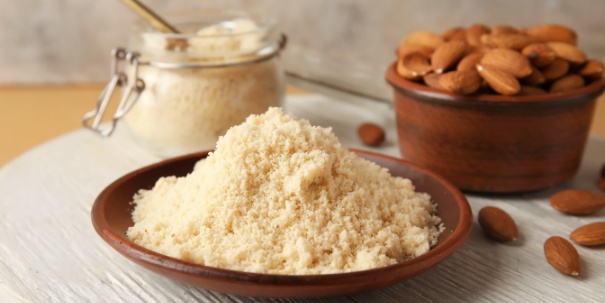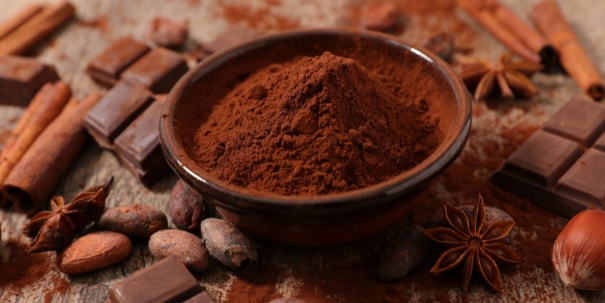Imagine sinking your teeth into a warm, gooey chocolate chip cookie, the aroma of vanilla and brown sugar filling your senses. But then, a pang of guilt hits you. You remember the doctor’s warnings about sugar and your struggle to manage blood sugar levels. Does this mean saying goodbye to your favorite treats forever? Absolutely not!
The world of baking has undergone a revolution, and deliciousness is no longer off-limits for those managing diabetes. With a few clever swaps and a sprinkle of knowledge, you can enjoy your favorite baked goods without the sugar rush and the accompanying worries. This article unveils seven ingenious ingredient swaps that will transform your baking experience, allowing you to indulge in treats that are both delightful and diabetes-friendly. Get ready to rediscover the joy of baking and savor the sweet taste of freedom!
Flour Power: Choosing the Right Foundation
For those managing diabetes, the type of flour used in baking can significantly impact blood sugar levels. White flour, a common ingredient in traditional baking, is quickly digested and can lead to spikes in blood sugar. Fortunately, several alternative flours offer healthier options without sacrificing taste or texture.
Almond Flour

A low-carbohydrate option with added benefits. Made from finely ground almonds, almond flour is low in carbohydrates and packed with protein and healthy fats. It lends a subtly sweet, nutty flavor to baked goods. A study found that almond flour improved blood sugar control and reduced insulin resistance in individuals with type 2 diabetes.
Coconut Flour

A fiber-rich choice for stable blood sugar. Derived from dried coconut meat, coconut flour is an excellent source of fiber, which slows down the absorption of sugar into the bloodstream. This helps prevent blood sugar spikes and promotes stable energy levels. A study showed that coconut flour improved blood sugar control and reduced cholesterol levels in individuals with type 2 diabetes.
Sweetness Without the Spike: Exploring Alternative Sweeteners
Traditional sugar poses a significant challenge for people with diabetes. However, the world of sweeteners has expanded, offering a variety of options that satisfy your sweet cravings without compromising your health.
Stevia

A natural, zero-calorie sweetener. Derived from the stevia plant, this natural sweetener has no calories and does not raise blood sugar levels. A study found that stevia is a safe and effective alternative sweetener for people with diabetes. While stevia can sometimes have a slightly bitter aftertaste, starting with small amounts and adjusting to your preference can help mitigate this.
Erythritol

A sugar alcohol with minimal impact on blood sugar. This popular sugar alcohol has about 60-70% of the sweetness of sugar but contains almost no calories and has minimal impact on blood sugar levels. A study found that erythritol did not affect blood sugar or insulin levels in individuals with type 2 diabetes. Erythritol is often combined with other sweeteners to enhance flavor and reduce any potential aftertaste.
Healthy Fats: Making Wise Choices
Fat is an essential component in baking, contributing to texture, flavor, and richness. However, for individuals with diabetes, selecting the right types of fat is crucial.
Avocado

A creamy and nutritious alternative to butter. While often associated with savory dishes, avocado can also be incorporated into baking. Its healthy fats, fiber, and nutrients make it a suitable substitute for butter or oil in many recipes. A study found that avocado consumption improved blood sugar control and reduced the risk of metabolic syndrome in individuals with type 2 diabetes.
Applesauce

A fruit-based option for added moisture and sweetness. Applesauce can be a surprisingly effective substitute for oil or butter in baking. It adds moisture and a subtle sweetness while providing a healthier fat profile. A study showed that applesauce consumption improved blood sugar control and reduced cholesterol levels in individuals with type 2 diabetes.
Egg-cellent Alternatives: Baking Without Eggs
Eggs are a common ingredient in baking, providing structure, leavening, and richness. However, for those with dietary restrictions or seeking plant-based options, several alternatives can achieve similar results.
Flaxseed

A vegan option with binding power. Ground flaxseed mixed with water forms a gel that mimics the binding properties of eggs in baking. This makes it a suitable replacement in recipes like cakes, muffins, and cookies. A study in the journal “Food Chemistry” found that flaxseed gel can effectively replace eggs in various baked goods, resulting in similar texture and quality. Flaxseed also offers the added benefits of fiber and omega-3 fatty acids.
Applesauce

A versatile ingredient with multiple uses. In addition to replacing oil or butter, applesauce can also stand in for eggs in certain recipes. Its moisture and binding properties make it a suitable egg replacement in cakes, muffins, and quick breads.
Milk Makeovers: Exploring Dairy-Free Alternatives
Milk is often used in baking to add moisture and richness. However, a variety of plant-based milk alternatives can be used without sacrificing taste or texture.
Almond Milk

A low-calorie option with a subtle nutty flavor. Almond milk has become a popular choice for both baking and everyday use. It’s low in calories and fat and provides a good source of vitamin E and calcium.
Soy Milk

A protein-rich alternative with a neutral flavor. Soy milk is a good source of protein and essential nutrients. Its neutral flavor makes it a suitable replacement for cow’s milk in a wide range of baking recipes. A study showed that soy milk can effectively replace cow’s milk in cakes without compromising texture or overall quality.
Chocolate Choices: Indulging Wisely
Chocolate remains a possibility for people with diabetes, but making informed choices is key.
Dark Chocolate

A healthier choice with antioxidant benefits. Dark chocolate, with its high cocoa content, is a healthier option compared to milk or white chocolate. It’s rich in antioxidants and may offer benefits for heart health and blood sugar control. When baking with dark chocolate, choose varieties with at least 70% cocoa content to maximize the health benefits. A study found that dark chocolate consumption improved insulin sensitivity and reduced blood pressure in individuals with type 2 diabetes.
Cocoa Powder

A versatile option for controlling sweetness. Cocoa powder delivers the rich chocolate flavor without the added sugar and fat found in chocolate bars. This allows for greater control over the sweetness and overall nutritional profile of your baked goods. Research indicated that cocoa powder consumption improved blood sugar control and reduced inflammation in individuals with type 2 diabetes.
Diabetic-Friendly Baking Swaps: A Quick Reference
Here’s a quick summary of the ingredient swaps discussed in this article:
| Ingredient to Replace | Diabetic-Friendly Swap |
|---|---|
| White flour | Almond flour or coconut flour |
| Sugar | Stevia or erythritol |
| Butter or oil | Avocado or applesauce |
| Eggs | Flaxseed gel or applesauce |
| Cow’s milk | Almond milk or soy milk |
| Milk chocolate | Dark chocolate (70% cocoa or higher) or cocoa powder |
By incorporating these simple swaps into your baking, you can enjoy your favorite treats while managing your blood sugar levels. Remember, baking is a journey of creativity and exploration. Embrace these alternatives and discover a world of delicious possibilities!
These seven ingredient swaps empower you to take control of your baking and your health. They demonstrate that managing diabetes doesn’t mean sacrificing the joy of creating and enjoying delicious treats. By making informed choices and embracing these alternatives, you can unlock a world of flavor that nourishes both body and soul.
Remember that baking is a journey of exploration and creativity. Don’t be afraid to experiment with different combinations of these swaps to discover new favorites and personalize your recipes. Perhaps you’ll find that a blend of almond and coconut flour creates the perfect texture for your muffins, or that a combination of stevia and erythritol provides the ideal sweetness for your cookies.
As you embark on your baking adventures, keep in mind that balance and moderation are key. While these swaps offer healthier alternatives, it’s still important to be mindful of portion sizes and overall carbohydrate intake.
Most importantly, remember that you are not alone on this journey. Connect with online communities, share your experiences, and seek inspiration from others who are embracing the world of diabetic-friendly baking. Celebrate each successful creation, savor the flavors of your labor, and revel in the knowledge that you are taking charge of your health without sacrificing the pleasures of life.
So, go ahead, preheat your oven, gather your ingredients, and embark on a baking adventure that nourishes your body and soul. With each bite of your creations, savor the sweet taste of freedom and the joy of baking without boundaries.







